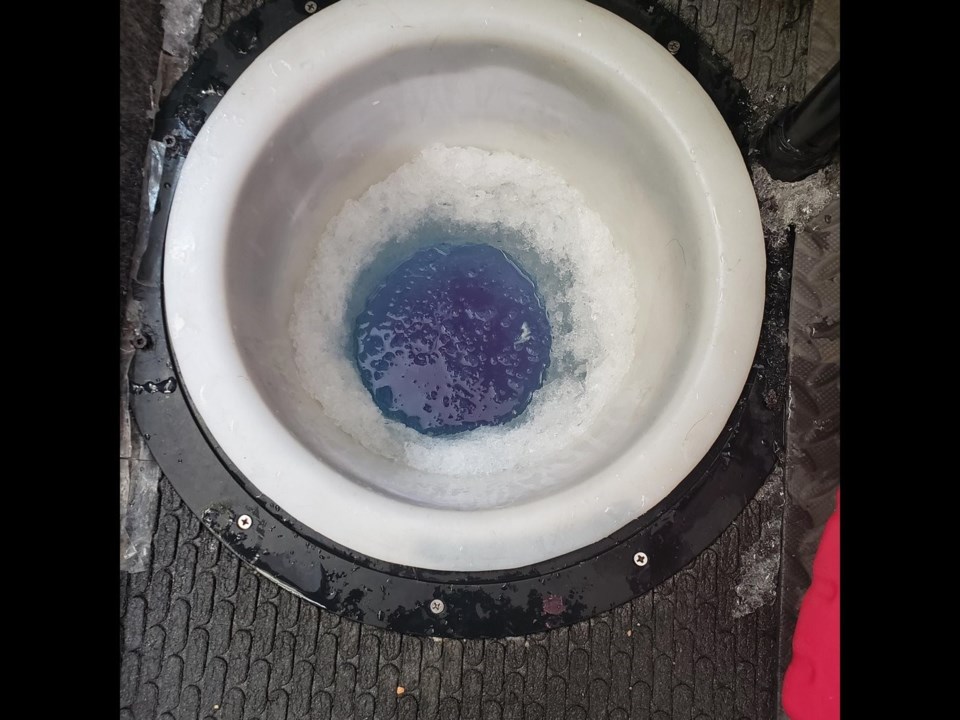��
The Water Security Agency (WSA) believes it has an answer about the odd, purple-blue water found by ice fishers in and on Pasqua Lake two weeks ago.
��
The provincial water manager said in a media release test results show the discoloration was “caused by a late cyanobacteria (algae) bloom last fall.”
��
Like what University of Regina (U of R) water scientist Dr. Peter Leavitt told the Leader-Post last week, researchers “believe the bloom froze in the ice in mid-October 2020 and underwent freeze and thawing cycles over the past few weeks,” the WSA said. “Cyanobacteria (algae) exposed to these conditions release a bright blue pigment called phycocyanin, as well as microcystin, a related toxin.”
��
Leavitt, who heads the U of R’s Institute of Environmental Change and Society, said the colour pigment is equivalent to “an organic dye,” not harmful to humans; it results from the freeze-thaw cycle busting up algae cells.
��
He and the WSA agreed the amount of microcystin found in the purple-blue samples is not particularly toxic — 0.1 parts per billion, the WSA said in its release.
��
The acceptable risk level, the WSA said, for “recreational activity is 20 parts per billion,” and for drinking water is “1.5 parts per billion.”
��
Leavitt cautioned high levels of microscystin could be an issue: It’s a cancer-causing toxin that will attack an organism’s liver. Humans tend to pass it through their systems quickly, by ingesting algae-covered water. He suggested avoiding chronic exposure to it.
��
“(Microcysitn) is found in many if not all of the lakes of southern Saskatchewan, but at fairly modest levels.
��
“What we’re seeing is these blooms are becoming more toxic,” because of global warming and increased nutrient run-off (phosphorus and nitrogen) from farmers’ fields, he said.
��
The WSA is to continue studying Pasqua Lake into the spring to check how or if algae blooms there are choking off its oxygen.
��
��




